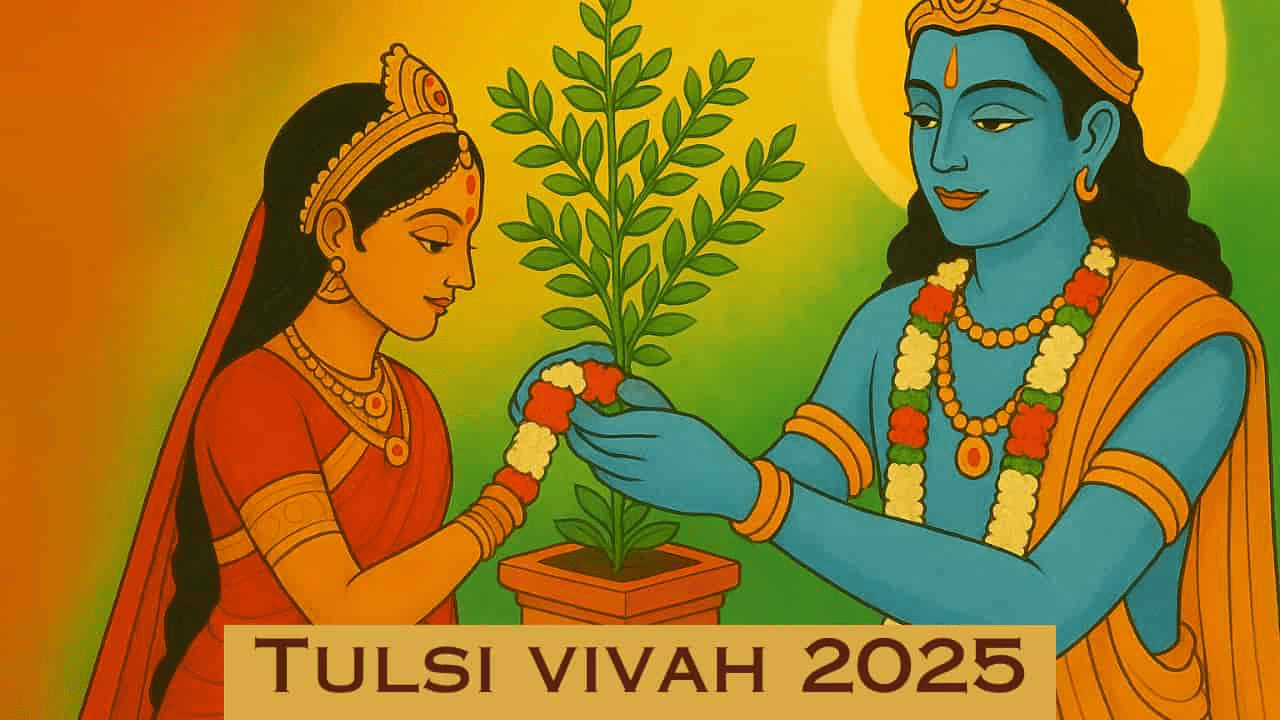
Tulsi Vivah 2025: From Date to Muhurat and Puja Samagri
Table of Contents
Date & Muhūrta
- Date: Sunday, 2 November 2025.
- Dvādaśī Tithi begins at ~ 07:31 AM on 2 Nov and ends at ~ 05:07 AM on 3 Nov.
- The festival is celebrated in the bright fortnight (Śukla Pakṣa) of the month of Kārtik.
- Note: Local muhurta may slightly vary by region; it’s best to check your regional panchāng.
Puja Samagri (Essential Materials)
Here is a detailed list of materials typically used for the Tulsi Vivah ritual:
- A healthy Tulsi plant (holy basil) in a pot or in its place in the courtyard.
- A Shaligrama stone or an idol/picture of Vishnu to represent the groom.
- Red cloth or chunni for the Tulsi (bride) and yellow cloth for Vishnu (groom).
- Sugar-cane stalks or banana shoots to build a “mandap” around the Tulsi plant (optional but common).
- Two small wooden chowkis or platforms, one for Tulsi, one for Vishnu.
- Flowers, flower-garlands for Tulsi and Vishnu.
- Incense sticks (agarbatti), lamp (diya) with ghee/oil.
- Turmeric (haldi), kumkum (vermilion), sandalwood paste (chandan) for tilak.
- Fruits, sweets (prasad) and traditional naivedya offerings.
- Betel leaves (paan), areca nut (supari), rice (akṣata), cotton wick, etc.
- Optionally: new clothes/ornaments for the Tulsi plant (as bride), moust for decor.
The Beginning of the Auspicious Season
Tulsi Vivah marks a significant point in the Hindu calendar, celebrated as the ceremonial marriage between the sacred Tulsi plant (also known as holy basil) and Lord Vishnu in his Shaligram form.
Observed on the eleventh day (Ekadashi) of the bright fortnight of Kartik month, this festival symbolizes the union of devotion and divinity. It is not only a religious ritual but also a cultural gateway, for it signals the start of the Hindu wedding season.
For centuries, families have marked Tulsi Vivah with deep reverence, preparing their homes and temples for a celebration that blends myth, symbolism, and devotion.
The festival also carries a strong emotional resonance, as it transforms a humble household plant into a divine bride, reminding devotees that even the simplest aspects of daily life hold cosmic significance.
In many ways, Tulsi Vivah creates an atmosphere of renewal, as though the home itself takes on a sense of festivity and blessings.
Mythological Background of Tulsi
Tulsi, revered as a manifestation of Goddess Lakshmi or Vrinda, holds an unparalleled place in Hindu tradition.
According to legend, Vrinda was the devoted wife of the demon king Jalandhar. Her unwavering chastity gave Jalandhar invincible power, making even the gods helpless.
To protect the universe, Lord Vishnu disguised himself as Jalandhar and deceived Vrinda. When she discovered the truth, she cursed Vishnu to be turned into stone, which later evolved into the sacred Shaligram form worshipped in temples.
Overcome with remorse, Vishnu granted Vrinda immortality as the sacred Tulsi plant.
This myth, rich with devotion, betrayal, and reconciliation, continues to inspire discussions on faith, sacrifice, and the complexity of moral choices.
It also shows how stories blend human emotions with divine intervention, ensuring their relevance even in modern times.
Rituals and Traditions of Tulsi Vivah
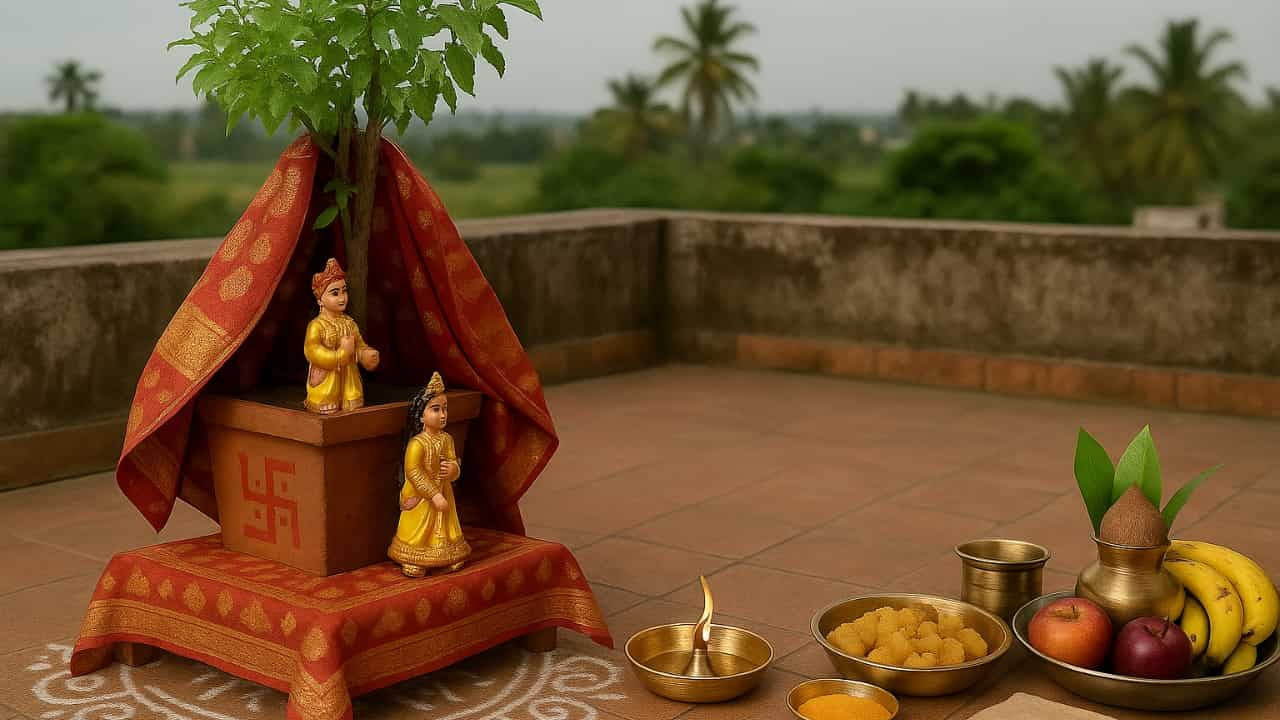
The day of Tulsi Vivah is observed with great enthusiasm in homes and temples.
Devotees prepare a Tulsi plant in a decorated pot or in a courtyard, dressing it as a bride with a red sari, bangles, and ornaments. The plant is adorned with flowers, sugarcane, and colorful decorations.
The groom, represented by the Shaligram or an idol of Vishnu, is placed nearby. A priest or elder performs the rituals, chanting Vedic mantras and tying the symbolic wedding knot between Tulsi and Vishnu.
- Devotees sing bhajans and offer prasad, often sweets made from jaggery, sesame, or coconut.
In many households, the marriage is followed by festive songs, laughter, and shared meals that reinforce the sense of togetherness the festival embodies.
Children, too, are often included in the rituals, ensuring that the tradition passes seamlessly from one generation to the next.
Tulsi Vivah as a Cultural Marker
Tulsi Vivah holds a unique place as the formal start of the wedding season in Hindu society.
Marriages postponed during the inauspicious Chaturmas period begin after this day, making it a turning point in the social calendar.
This ritual connects mythology to everyday life, creating a bridge between divine symbolism and human tradition.
- In rural India, Tulsi Vivah is celebrated with collective fervor, with villagers gathering at temples to conduct the marriage together.
- In urban households, the ritual has adapted but remains a central annual event, proving how traditions evolve while maintaining their sacred essence.
In this way, Tulsi Vivah becomes not just a religious occasion but a cultural event that strengthens community bonds.
Spiritual Symbolism of the Sacred Marriage
The union of Tulsi and Vishnu is not merely ritualistic but deeply symbolic.
- Tulsi represents purity, devotion, and selfless service, while Vishnu represents preservation, cosmic order, and divine stability.
Their marriage is seen as the harmony of devotion and divinity, where human dedication meets divine grace.
It also reflects the idea that plants and nature are not lifeless but sacred, embodying divinity.
By marrying Tulsi to Vishnu, devotees acknowledge the interconnectedness of life, divinity, and ecology, a reminder that spirituality and environmental care are deeply intertwined.
This symbolism elevates the Tulsi Vivah beyond ritual, turning it into a reminder of universal harmony.
The Role of Tulsi in Daily Devotion
Tulsi is more than a festival symbol. In countless Hindu households, a Tulsi plant is placed in the courtyard, worshiped daily with lamps, water, and prayers.
It is believed to purify the air, protect the home from negativity, and bring prosperity. Women, in particular, revere Tulsi as a goddess of well-being and harmony.
The plant’s medicinal value is equally important. In Ayurveda, Tulsi is called the “queen of herbs,” used for immunity, respiratory health, and stress relief.
This blend of spirituality and health makes Tulsi unique – a plant that sustains both body and soul, becoming a constant reminder of balance in life.
Families often treat the Tulsi plant almost like a member of the household, nurturing it with care and devotion.
Environmental Echoes of Tulsi Vivah
Beyond its mythological core, Tulsi Vivah also conveys an ecological message.
By revering a plant as divine, Indian tradition underscores the sacredness of nature.
This is especially relevant today, as modern society grapples with the climate crisis and ecological imbalance.
- The act of worshiping Tulsi serves as a reminder that sustainability is not just a scientific need but also a spiritual duty.
Protecting plants, water, and soil aligns with the cosmic order symbolized by Vishnu and Tulsi’s marriage.
By celebrating this festival, devotees reinforce their duty to honor and protect the natural world that sustains them.
The Tulsi Vivah, therefore, becomes more than a religious ritual – it stands as a call to respect the environment.
Lessons from Tulsi Vivah for Modern Life
Tulsi Vivah offers timeless lessons:
- Devotion as strength: Vrinda’s loyalty empowered her husband, showing the transformative power of devotion.
- Reconciliation and forgiveness: The union reflects healing after betrayal, a lesson in forgiveness, and restoration.
- Sacredness of nature: Tulsi embodies the idea that divine presence lives in the natural world.
- Balance in life: The festival encourages harmony between faith, health, and community.
A Festival of Faith and Renewal
Tulsi Vivah is more than a symbolic marriage. It is a celebration of devotion, reconciliation, and the sacredness of nature.
For families, it is a cherished tradition; for society, it marks the renewal of auspicious times; and for the individual, it is a reminder to balance devotion with gratitude.
As households prepare Tulsi plants with love and care, they are not just enacting an old story – they are renewing their connection to faith, family, and the natural world.
Tulsi Vivah remains a festival that beautifully combines mythology with daily life, ensuring that ancient wisdom continues to guide the rhythm of modern living.
It is a festival that connects generations, communities, and even the environment in a single act of devotion.






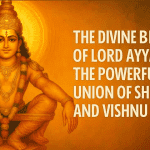


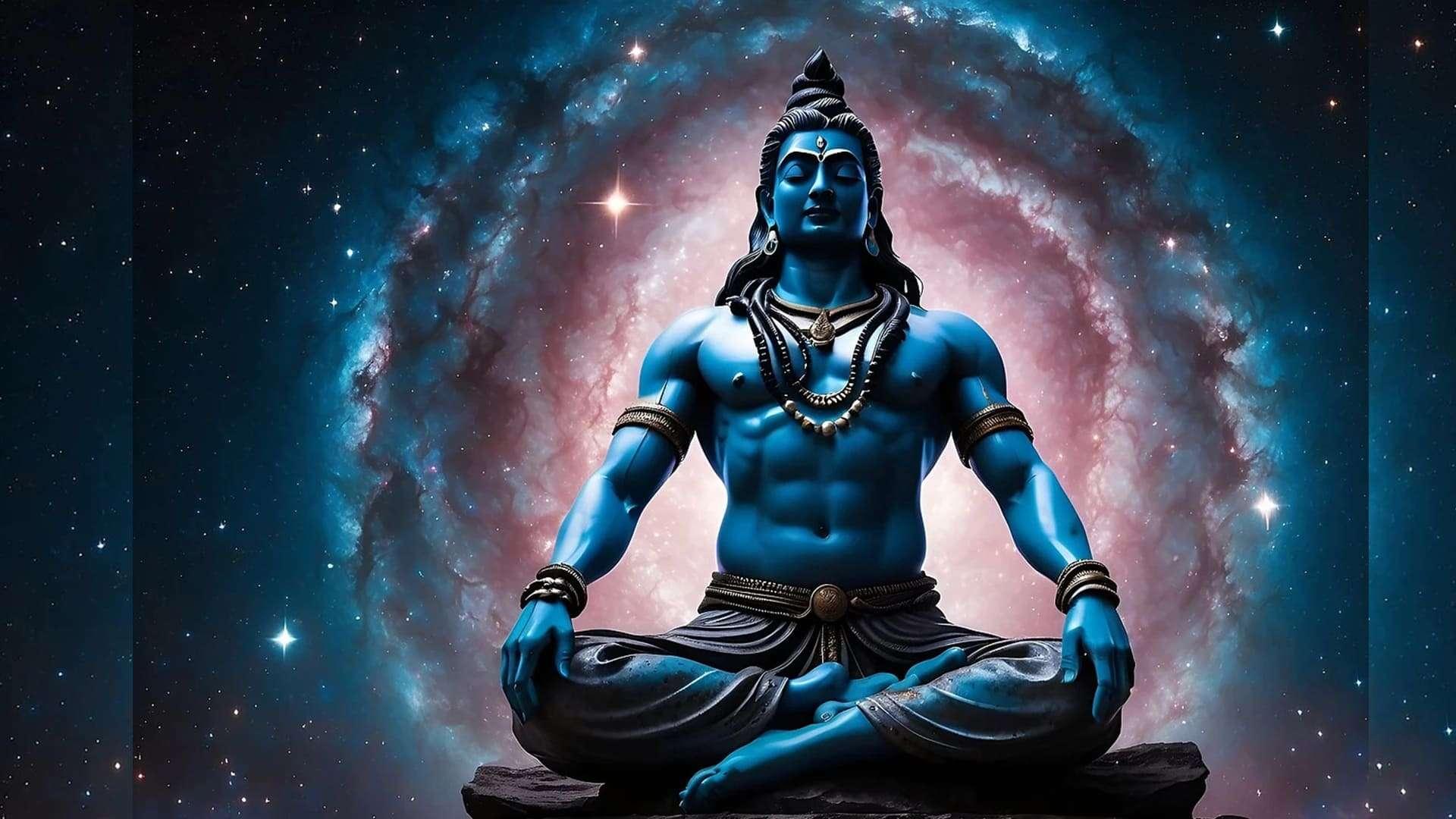
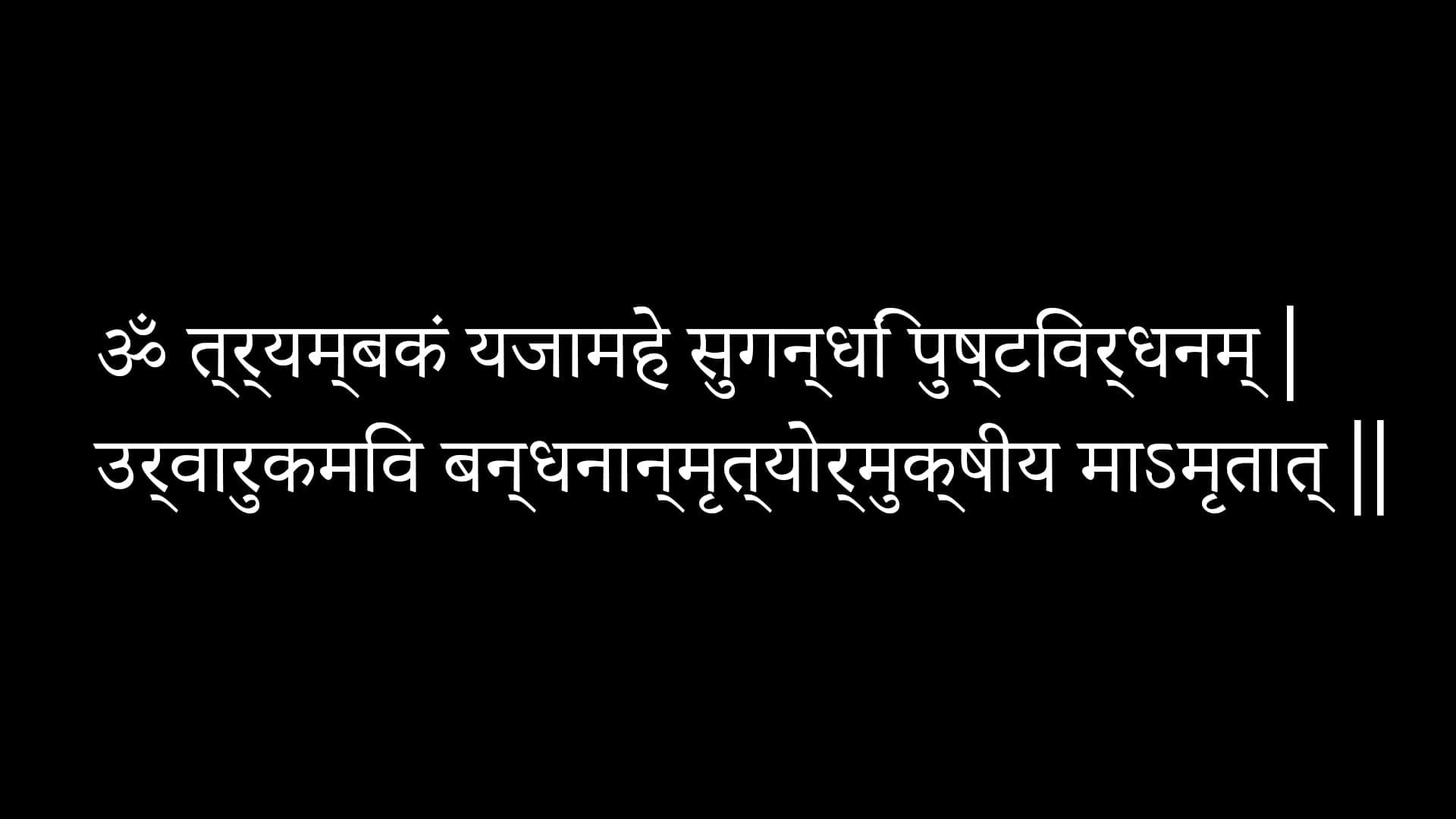




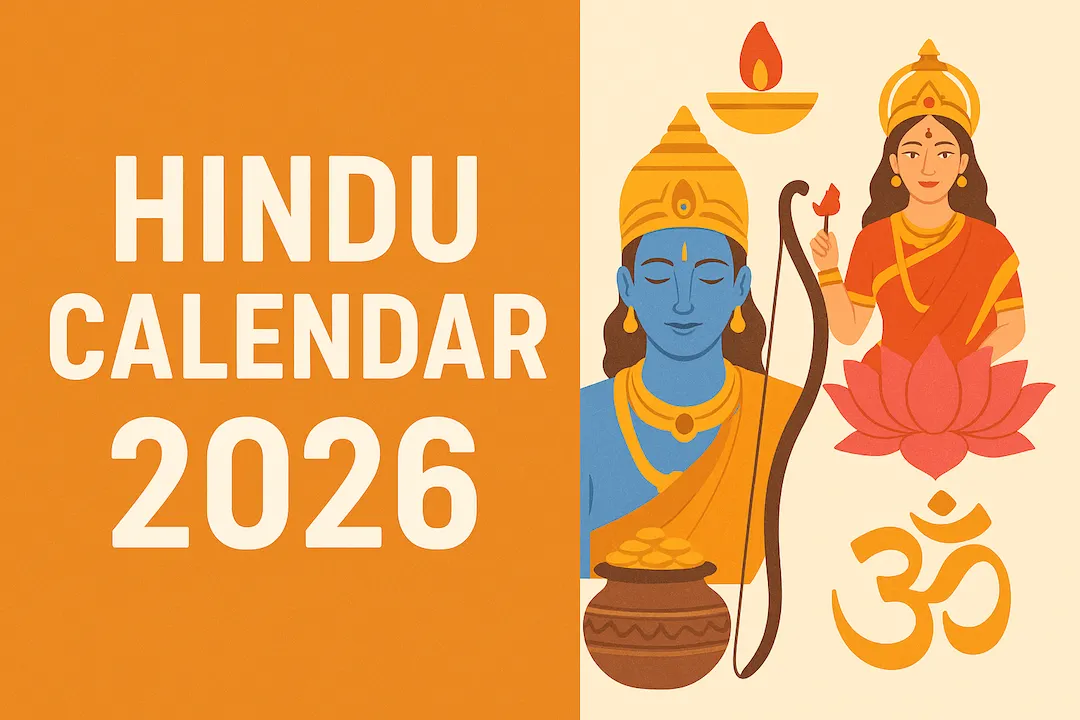
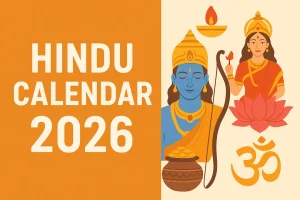
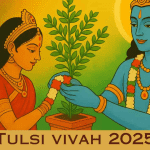
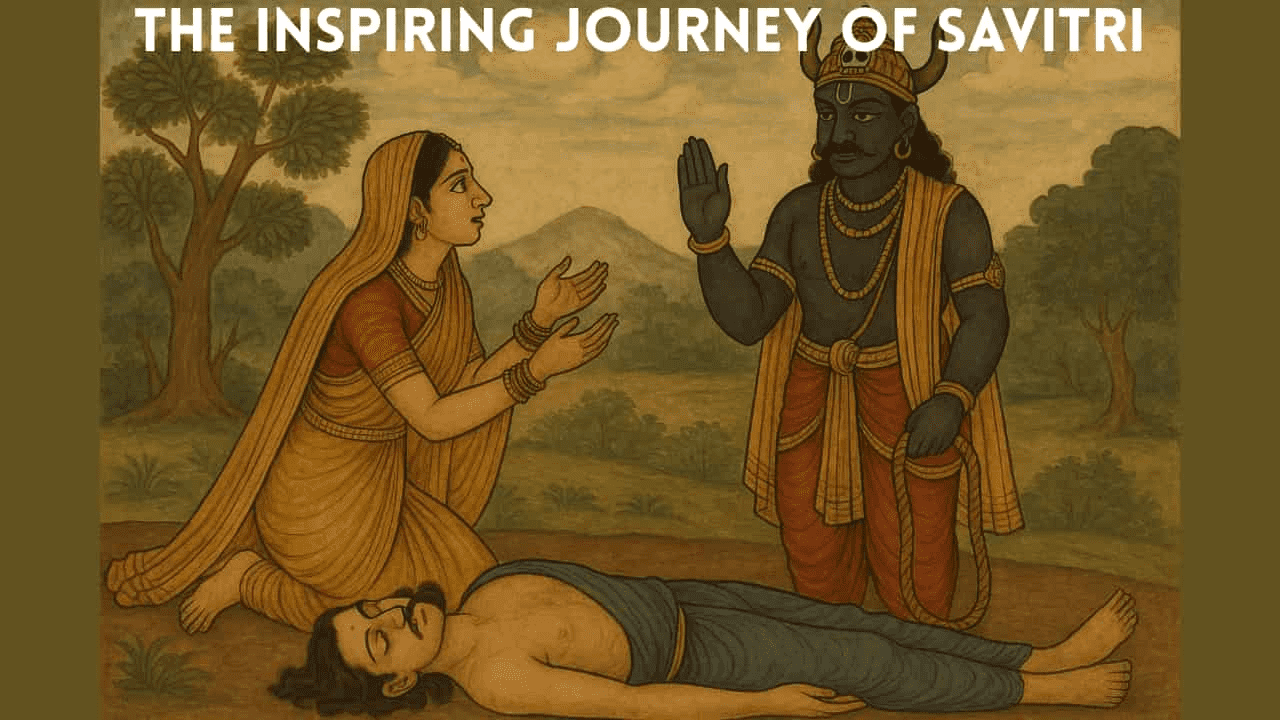
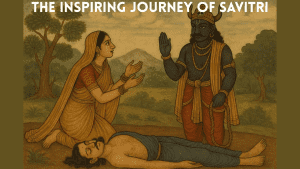


Add comment